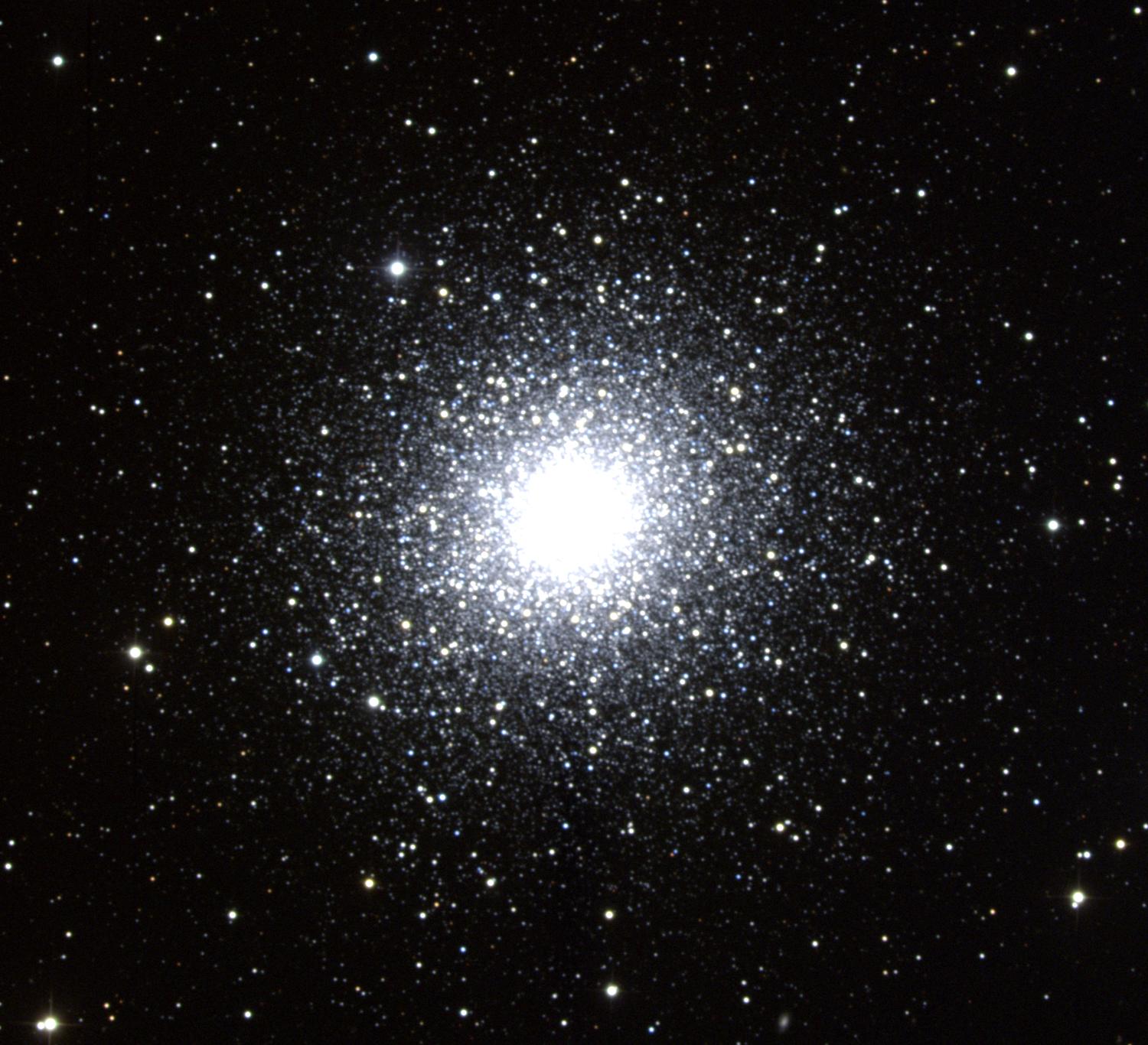 M2, NGC7089 is a Galactic
globular cluster in
Aquarius.
M2, NGC7089 is a Galactic
globular cluster in
Aquarius.
This image was made using the Kitt Peak National Observatory 0.9-meter telescope.
M2 is the 2nd object in the Messier Catalog.
It is about 15 kpc away and is located almost directly below the south Galactic pole in the Galactic halo.
M2 is one of the richer denser globular clusters with about 10**5 star and a diameter of about 50 pc.
It has an overall visual magnitude of 6.3 which makes it just barely unobservable with the unaided eye. But it is a good object for small telescopes and binoculars.
Like all Galactic globular clusters M2 is very old. Current calculations put the ages of Galactic globular clusters at about 12.5 Gyr (FK-638).
This age is a lower bound on the age of the observable universe which in the concordance model is 13.7+/-0.2 Gyr (FK-653).
Credit: Doug Williams, REU Program/NOAO/AURA/NSF.